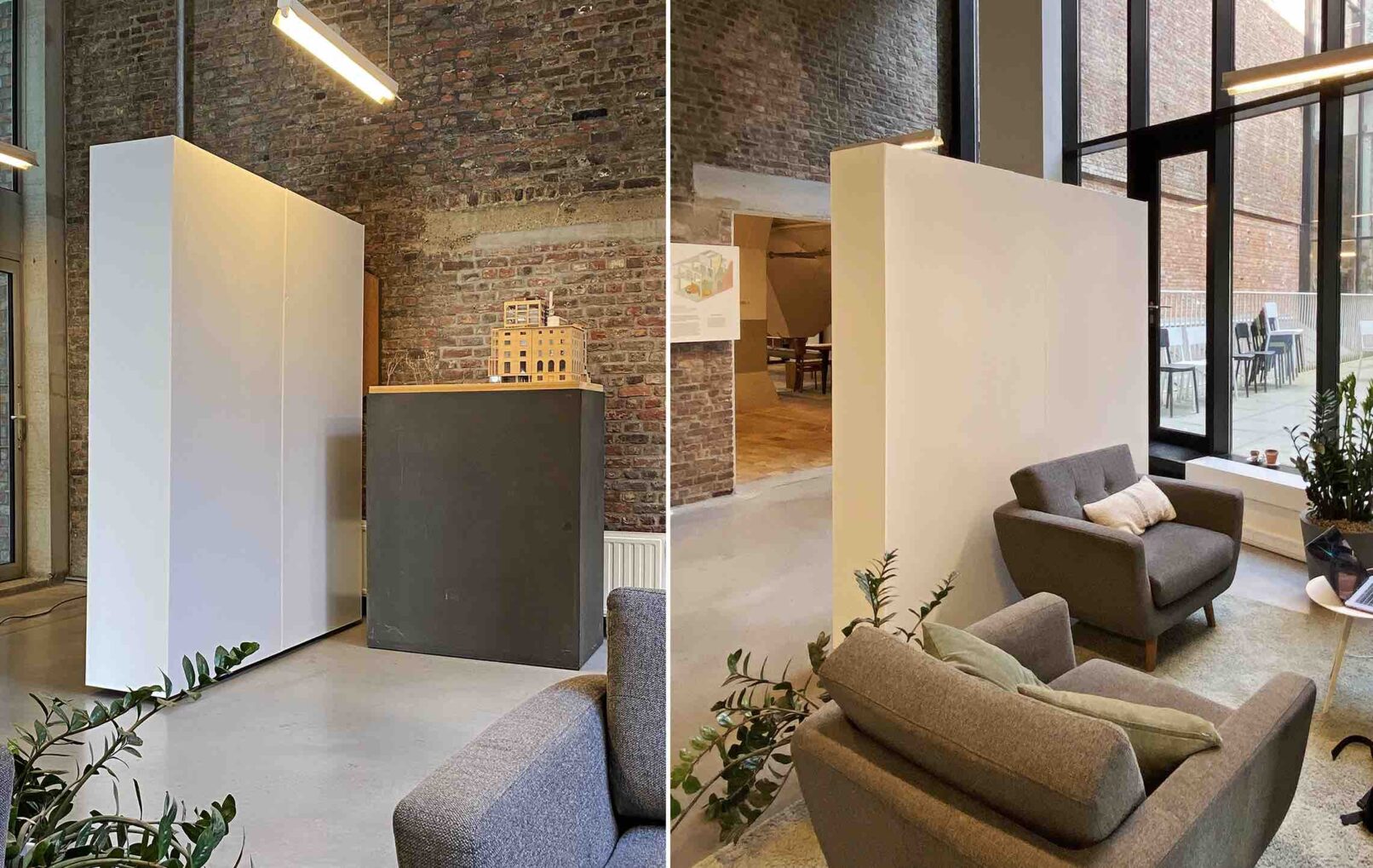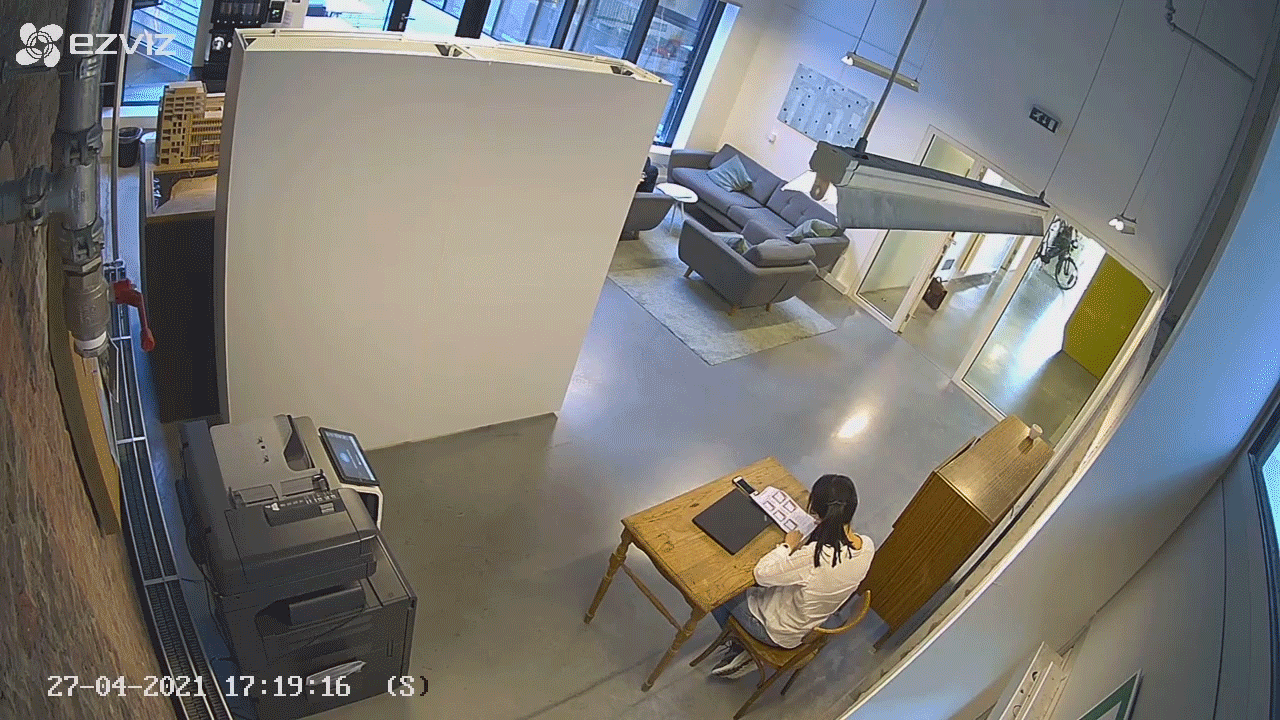A Robotic Wall Adapts an Interior Architectural Layout
What happens if an architectural layout changes autonomously?
Although it has been shown that a spatial layout can influence the ergonomic or social comfort of its occupants, architects only sparingly integrate sliding or rotating walls in their designs. This is probably because mobile architectural objects and furniture require a considerable amount of (repetitive) manual labour to be moved. However, as recent technological advances in robotic furniture, shape-shifting public displays, and haptic feedback in (extended) virtual reality simulations have demonstrated, mobile robots can now move life-sized physical elements like sofas, chairs or room dividers. One could therefore easily foresee a future in which architecturally-scaled spatial layouts could become autonomously and robotically adapted.
Because most prototypes of responsive / interactive / kinetic / adaptive / … architecture have not been able to achieve this theorised potential, there is a need to understand how and when space actually needs to adapt.
Our study thus deployed a life-sized robotic wall that we covertly controlled to move autonomously via the Wizard-of-Oz methodology. We then measured the experience of 26 occupants while they performed six different activities inside an office breakout room that was being adapted by this wall in either a ‘reactive’ or ‘proactive’ way. Based on these empirical findings, we propose how autonomous spatial adaptation should primarily aim to balance the spatial, situational and subjective qualities of the resulting ‘sense of place’. We also define eight distinct design recommendations that exploit the unique affordances of spatial adaptation.
Publication
Binh Vinh Duc Nguyen, and Andrew Vande Moere. 2022. Towards a Responsive Architecture that Mediates Place: Recommendations on How and When a Robotic Wall should Adapt Space. Proceedings of the ACM on Human Computer Interaction (PACM HCI). In publication.
Binh Vinh Duc Nguyen, Adalberto L. Simeone, and Andrew Vande Moere. 2021. Exploring an Architectural Framework for Human-Building Interaction via a Semi-Immersive Cross-Reality Methodology. In Proceedings of the 2021 ACM/IEEE International Conference on Human-Robot Interaction (HRI ’21). ACM.





